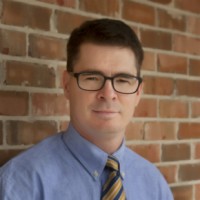Reflections from the classroom
Many, perhaps most, readers of Then and Now teach in one context or another. The responsibility, joy, and challenge of teaching is paradoxical: it is a complex exercise, and yet the task is simple. Is teaching a calling? Can one learn to be a great teacher, or is teaching a gift with which someone is born? What is the future of teaching, particularly in higher-ed settings? How do we teach students to love mercy, act justly, and walk humbly with their God?
These and a host of other questions face everyone who sets out to lead a group of students through a learning process. In the next several weeks, we will hear four seasoned teachers talk about their classroom experiences walking with students and guiding them as they expand their minds through critical thinking and widen their bases of knowledge. Four educators will present two posts each, in which they will introduce important issues in teaching and challenge each of us to think carefully and clearly about our own approaches as we lead our students.
First we will hear from Mark Edwards, assistant professor of history and politics at Spring Arbor University. Edwards writes about teaching the New Deal in online courses and takes comfort in the fact that students’ perspectives on FDR’s presidency offer hope for a more socially just America. Second we will enjoy Edward Carson’s post, which introduces us to the culture at Brooks School, an elite New England boarding school where he teaches as the only African American in the history department. Mary Beth Mathews, associate professor of religion at the University of Mary Washington, talks about how she engages with social justice issues in her classroom—not as an abstract idea but in response to ongoing protest movements on her campus surrounding the death of Grace Rebecca Mann. And Todd Brenneman, assistant professor of church history at Faulkner University, discusses the exercise of teaching a history of evangelicalism to a class of three students, and watching them grapple with the challenges of accepting certain positions.
Each of these teachers will present their first post over the course of the next month here at Then and Now, and after these first installments have run, we will have the opportunity to read their second installments. We will post these reflections as the 2015–2016 academic year is getting started.
I’ve been teaching since 1992; presently I teach about half my load of history and philosophy courses at Southwestern Seminary in a fully accredited bachelor’s program in a maximum security prison outside Houston. My students are what we might call non-traditional, in that they are never getting out of prison. They are training to become inmate pastors, and they will be placed throughout the Texas prison system. Does my teaching in the prison matter? What impact can I have on my students’ lives, even though my experiences and situation in life are totally different from theirs? How can I persevere despite the burdens of teaching in such a context?
I am anxious to learn from this series, and I'm looking forward to the discussions we hope it will spawn. I know that it will be an encouragement.
Our weekly feature Then and Now harnesses the expertise of American religious historians who care about the cities of God and the cities of humans. It's published in partnership with the Kripke Center of Creighton University and edited by Edward Carson, Beth Hessel, and John D. Wilsey.






